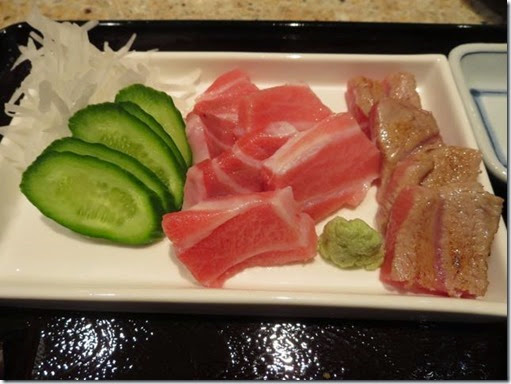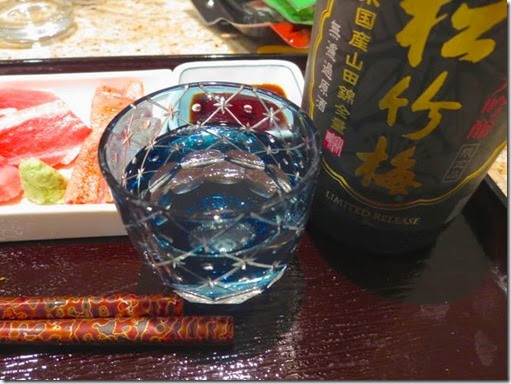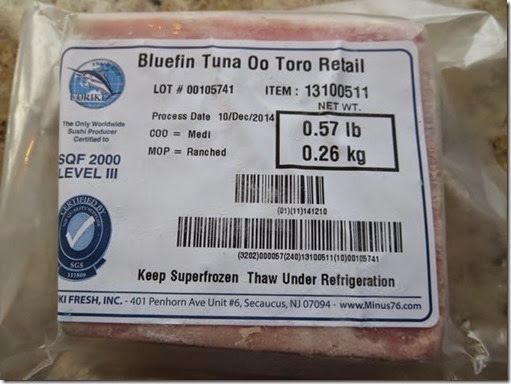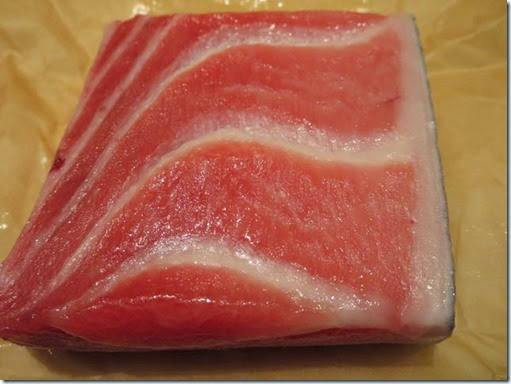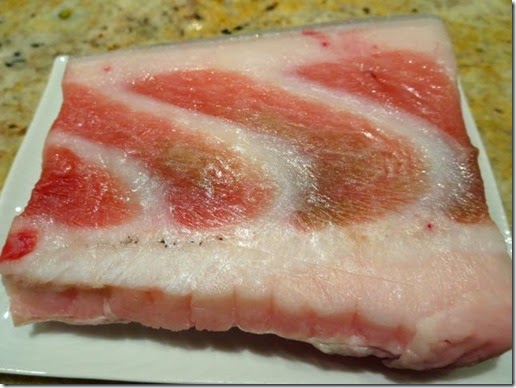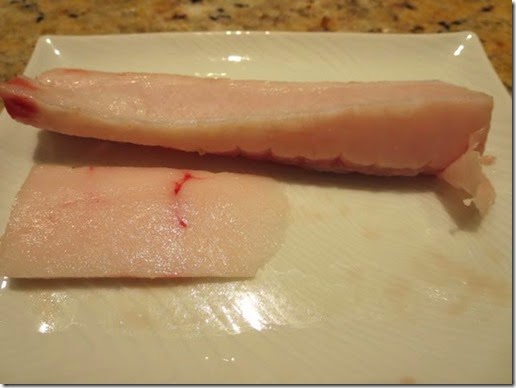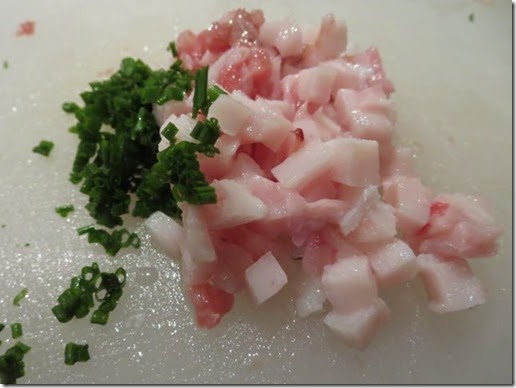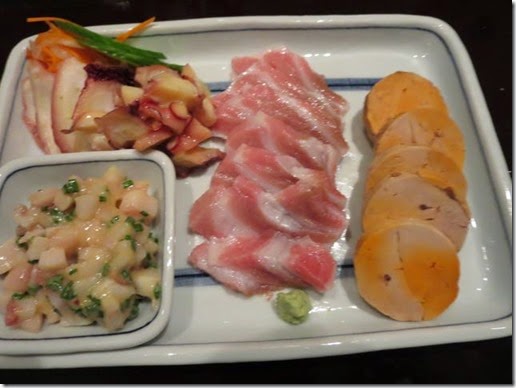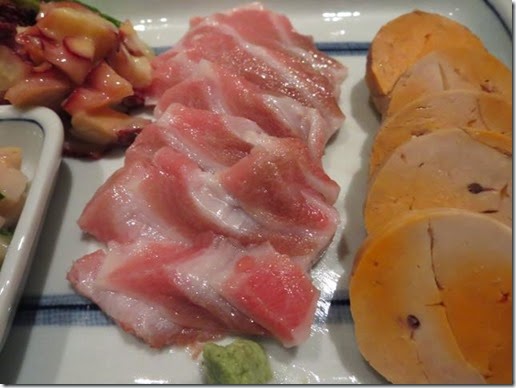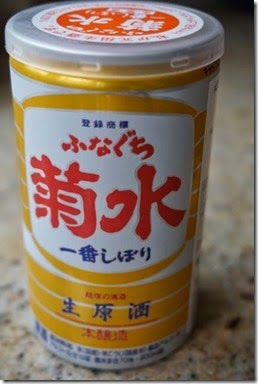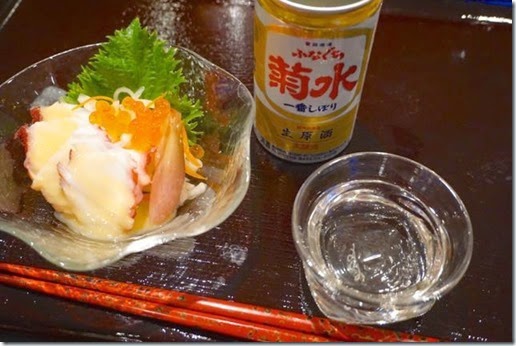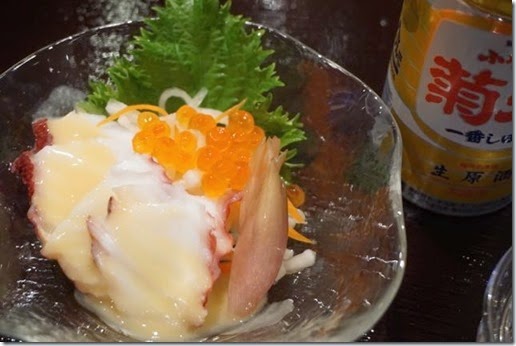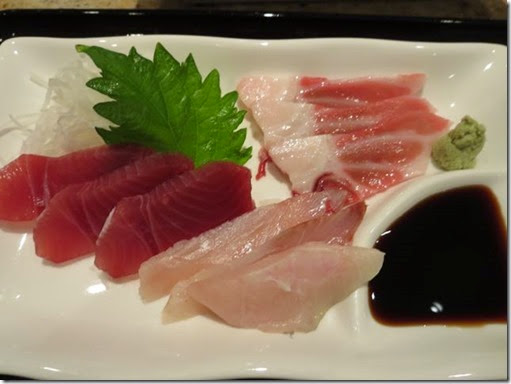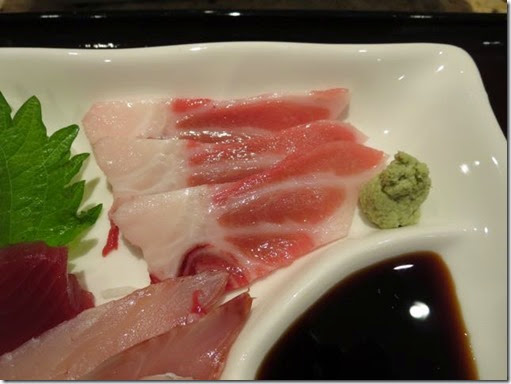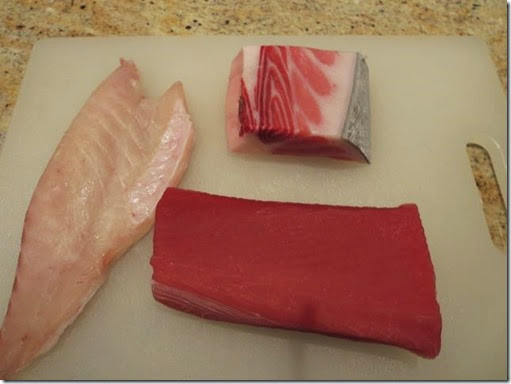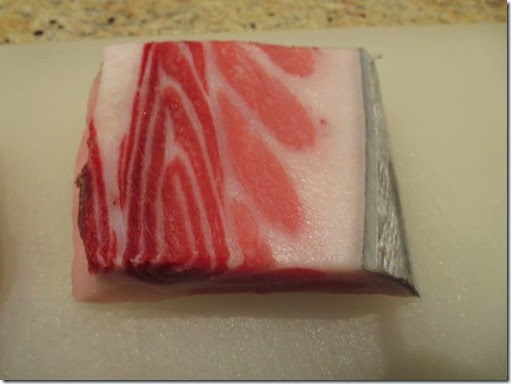When I was getting our usual filet of salmon, I could not resist getting cleaned squid. Since I did not have much time to deal with the squid when I got home, I decided to boil the entire one pound (tubes and tentacles). Since cleaned squid we can get here is previously frozen and thawed ("for your convenience"), it can not last long and needs to be cooked immediately. From the prepared squid, I made two dishes. One is Italian style squid salad.
I made a similar dish before without any recipe. This one is loosely based on the recipe I saw on line.
The base green is our home grown arugula. It was getting a bit tough but it has so much flavor even without any dressing. I let the squid marinade for several hours in the refrigerator before serving.
This must have been the next day. I just made it to our usual
sumiso 酢味噌 dressed Japanese-style salad with cucumber and wakame seaweed.
Ingredients (this will be 4 servings for us as a small appetizer).
•
2/3 lb cleaned squid
•
1 tablespoons fresh lemon juice
•
1/2 tablespoon red-wine vinegar (I used balsamic vinegar)
•
1/4 cup extra-virgin olive oil
•
1 large garlic clove, minced
•
salt and black pepper to taste
•
1/4 sweet (Vidalia) onion, halved lengthwise, then thinly sliced crosswise
•
1/4 cup pitted Kalamata olives, halved lengthwise
•
Skinned Campari tomatoes (4-5), halved or quartered if large
•
1 celery ribs, cut into 1/4-inch-thick slices
•
Parsley, several sprigs, stem removed, chopped
Preparation of squid:
Rinse squid under cold running water. Halve tentacles lengthwise and cut bodies crosswise into 1/3-inch-wide rings.
Cook squid in a boiling salted water with a splash of sake, uncovered, until just opaque, 40 to 60 seconds. Drain in a colander and immediately transfer to a bowl of ice and cold water to stop the cooking. When squid is cool, drain and pat dry.
Directions for salad:
Whisk together lemon juice, vinegar, oil, garlic, salt, and pepper in a small bowl, then stir in onion, squid, olives, tomatoes, celery, and parsley in a large bowl. Toss with dressing and season with salt and pepper. Let stand at least 15 minutes to allow flavors to develop (I refrigerated for several hours).
Both preparations were good. The Italian-style has more complex flavors with a burst of saltiness when you bite into the olive. For this we choose to have American brewed
G-sake on the rocks.





